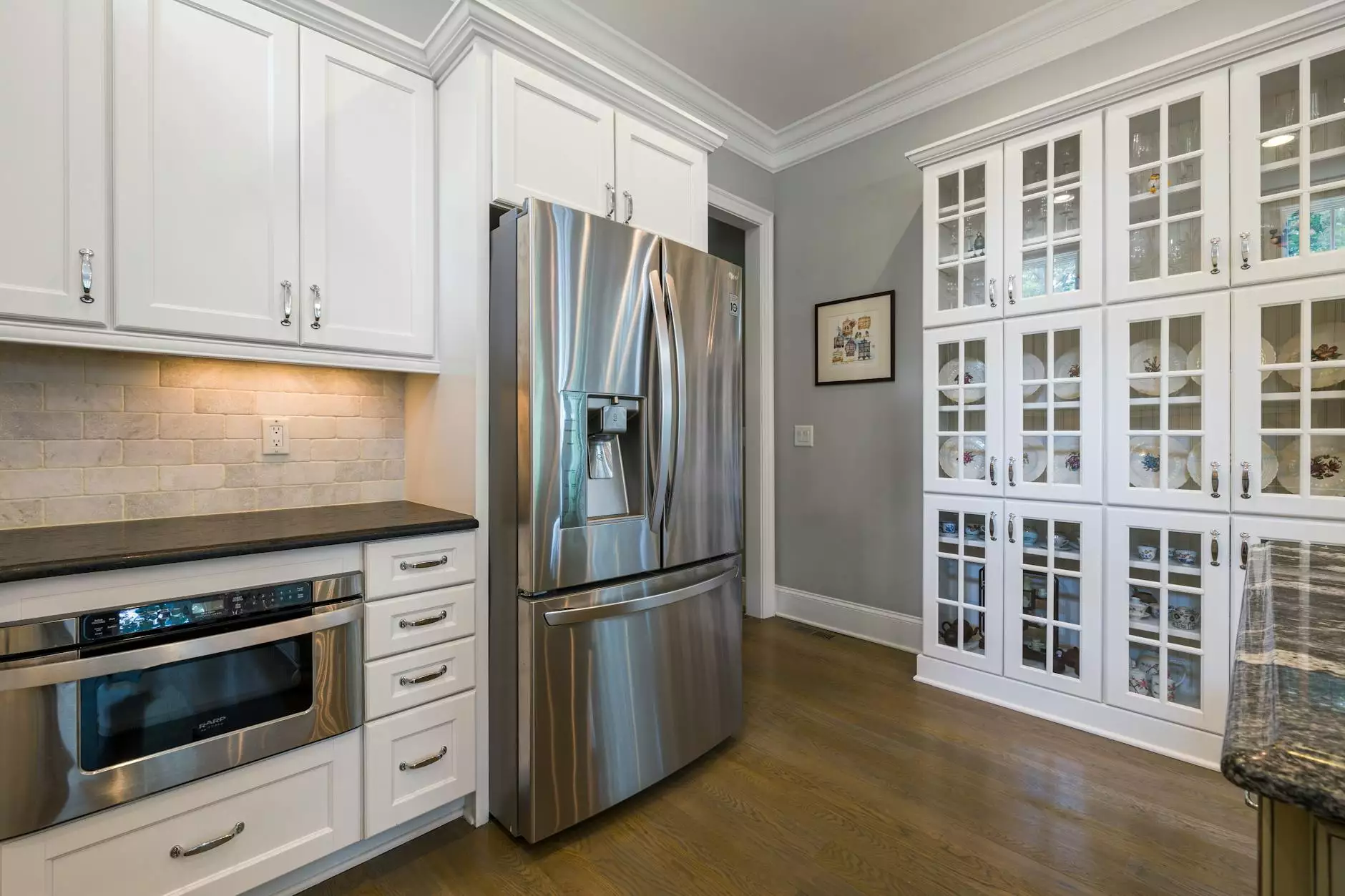Transform Your Space: The Ultimate Guide to Custom Kitchen Remodels

The kitchen is often considered the heart of the home, a space where families gather, meals are prepared, and memories are created. As the demands of modern life evolve, so too does the need for a kitchen that not only meets those demands but also reflects the unique style and needs of its users. This is where a custom kitchen remodel comes into play. In this comprehensive guide, we will explore everything you need to know about custom kitchen remodels to ensure your project is a resounding success.
1. Understanding Custom Kitchen Remodels
A custom kitchen remodel goes beyond simply updating cabinets and countertops. It involves a complete reimagining of the space to enhance both functionality and aesthetics according to your individual tastes and needs. Here are a few key components of a custom kitchen remodel:
- Personalized Design: Tailoring the layout, color scheme, and materials to suit the homeowner's preferences.
- Smart Storage Solutions: Incorporating innovative storage options to maximize space efficiency.
- High-Quality Materials: Utilizing premium materials that provide durability and enhance visual appeal.
- Integration of Technology: Implementing smart kitchen technology for improved functionality and convenience.
2. Benefits of a Custom Kitchen Remodel
When considering a custom kitchen remodel, it’s essential to recognize the multitude of benefits it can bring. Below are some of the most compelling reasons to invest in a kitchen makeover:
- Increased Home Value: A well-executed kitchen remodel can significantly boost your property’s market value, making it a wise investment.
- Improved Functionality: Optimize your kitchen's design to suit your cooking habits and lifestyle, creating a more efficient workspace.
- Enhanced Aesthetics: Transform your kitchen into a beautiful and welcoming space that reflects your personal style.
- Energy Efficiency: Upgrade to energy-efficient appliances and fixtures that save on utility bills and reduce your environmental footprint.
3. Planning Your Custom Kitchen Remodel
The key to a successful custom kitchen remodel lies in thorough planning. Here’s a step-by-step guide to help you navigate the process:
Step 1: Define Your Goals
Begin by asking yourself what you hope to achieve with your remodel. Are you looking for more space, better functionality, or a fresh look? Determining your goals will guide your design and material choices.
Step 2: Set a Budget
Knowing how much you are willing to invest in your kitchen remodel is crucial. Be realistic and remember to factor in unexpected costs that may arise.
Step 3: Research and Gather Inspiration
Look for inspiration in design magazines, online platforms like Pinterest, or visiting local showrooms. Collect images and ideas that resonate with your vision.
Step 4: Hire Professionals
Consider hiring a professional kitchen designer or contractor who specializes in custom kitchen remodels. They can provide expert insights and help bring your vision to life while ensuring that the project proceeds smoothly.
4. Design Elements of a Custom Kitchen
The design of your kitchen should marry form and function. Below are critical elements to consider when designing your custom kitchen:
Layout
The layout of your kitchen is foundational. Popular layouts include:
- U-Shaped: Provides ample counter space and storage; ideal for larger kitchens.
- L-Shaped: Versatile and practical; works well in medium-sized spaces.
- Galley: Features two parallel counters and is great for small kitchens, offering efficiency.
- Island: Adds extra prep area and seating; enhances social interaction in larger kitchens.
Cabinetry
Custom cabinetry can enhance both the functionality and aesthetics of your kitchen. Options to consider include:
- Shaker Style: Classic and timeless, suitable for various decor styles.
- Modern Flat-Panel: Sleek and minimalist, perfect for contemporary kitchens.
- Open Shelving: Creates an airy feel and allows for easy access to kitchenware.
Countertops
The choice of countertops impacts both the beauty and practicality of your kitchen. Consider materials such as:
- Granite: Durable and unique; each slab has its own natural beauty.
- Quartz: Engineered for consistency and offers a wide range of colors.
- Butcher Block: Warm and inviting; great for food preparation and adds character.
Lighting
Effective lighting can transform a kitchen space. Layered lighting—comprising ambient, task, and accent lighting—will ensure your kitchen is both functional and welcoming.
5. Choosing the Right Appliances
High-quality appliances are a vital part of a custom kitchen remodel. Aim for energy-efficient options that fit your culinary needs. Consider:
- Smart Refrigerators: Equipped with technology to help manage grocery lists and expiration dates.
- Convection Ovens: More efficient cooking, ideal for foodies.
- Induction Cooktops: Fast heating and energy-efficient.
6. Incorporating Innovative Storage Solutions
Maximizing storage is crucial in any kitchen remodel. Here are some innovative solutions to consider:
- Pull-Out Pantries: Easy access to dry goods and maximizes vertical space.
- Drawer Organizers: Keep utensils and cutlery neatly arranged and accessible.
- Corner Cabinets: Use lazy Susans or pull-out shelves to utilize awkward spaces.
7. Eco-Friendly Choices in Your Remodel
As sustainability becomes increasingly important, consider incorporating eco-friendly elements into your kitchen remodel. This includes:
- Recycled Materials: Use recycled glass or reclaimed wood for countertops and cabinetry.
- Energy-Efficient Appliances: Select ENERGY STAR-rated appliances to reduce energy consumption.
- Low-VOC Paints: Choose paints that are safe for indoor air quality and minimize chemical exposure.
8. Working with a Kitchen Remodeler
Collaborating with a skilled kitchen remodeler can significantly ease the process. Look for a contractor that:
- Has a solid portfolio of completed custom kitchen remodel projects.
- Offers detailed timelines and budgets.
- Communicates clearly and is responsive to your needs.
Conclusion
A custom kitchen remodel is not merely about updating an old space; it is about creating a functional yet beautiful environment that meets your personal needs. By understanding the process, recognizing the benefits, and making informed design choices, you can transform your kitchen into a dream space that enhances your lifestyle and adds significant value to your home. If you’re ready to take the first step towards your kitchen transformation, contact Kitchen Makeovers at kitchenmakeovers.co.uk for expert advice and personalized solutions tailored to your vision.








